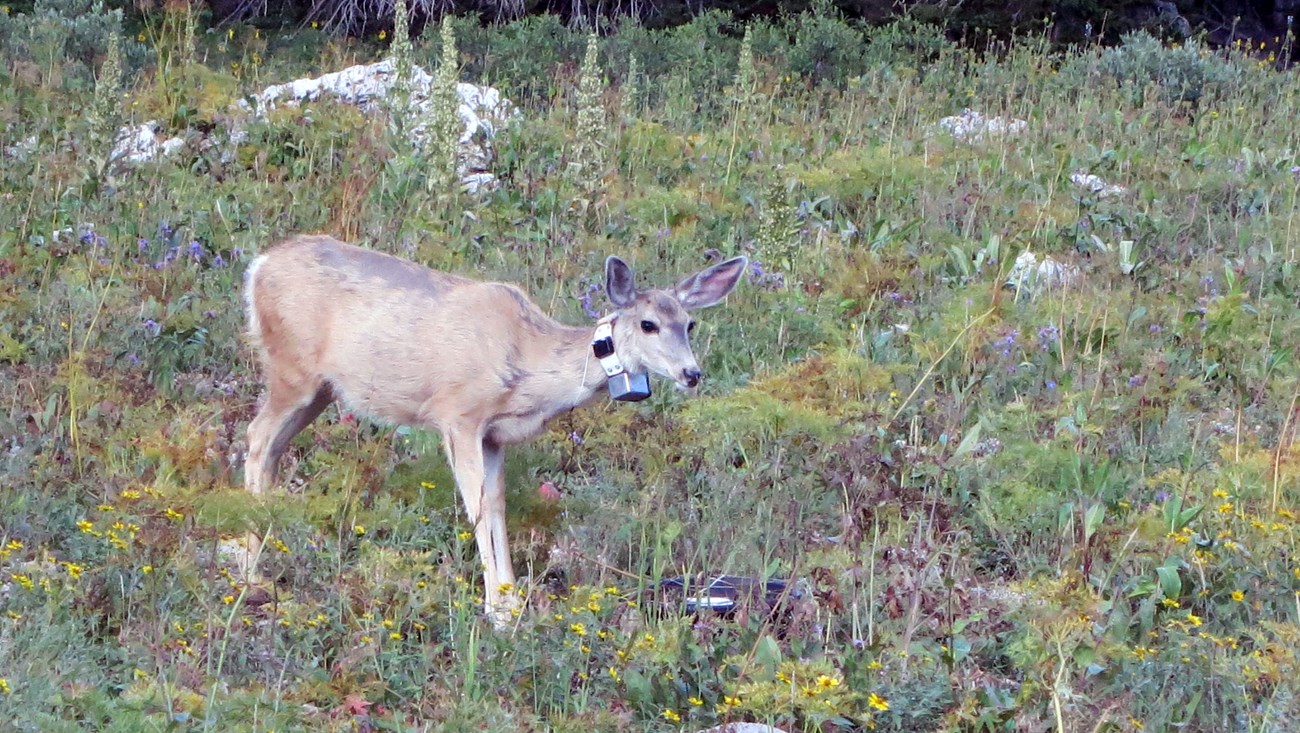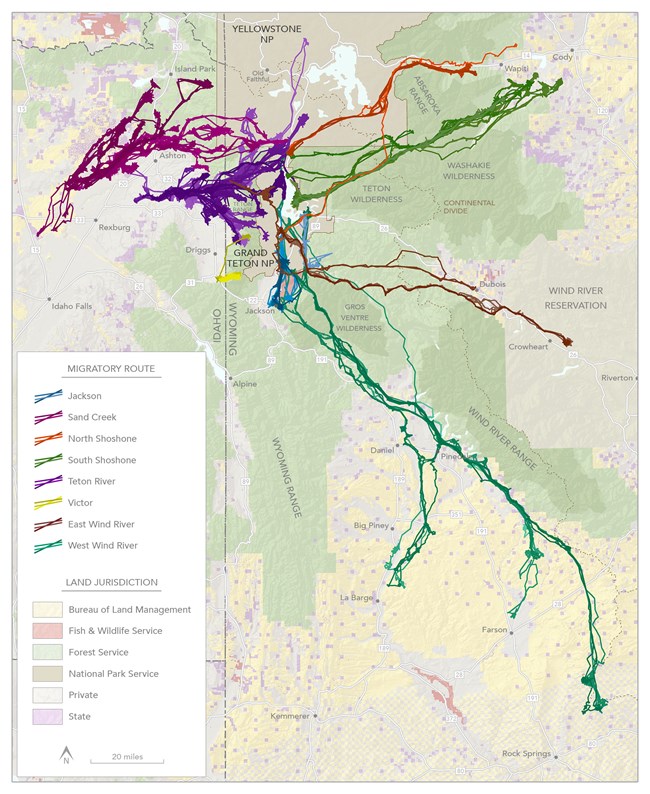
Mule deer (Odocoileus hemionus), one of many park animals that are seasonal residents, undertake annual migrations to distant wintering areas to meet their biological needs. Migrations showcase the behavioral strategies species use to exploit seasonal resources in otherwise inhospitable environments. Despite their ecological value, animal migrations have received little conservation attention until recently. Documenting animal movements is an essential first step to meaningful conservation actions. Park mule deer research provides information critical to protecting important animal migration corridors in the Greater Yellowstone Ecosystem. Park scientists are documenting the migrations of mule deer moving between summering grounds in Grand Teton National Park and the John D. Rockefeller, Jr. Memorial Parkway and crucial wintering areas throughout the ecosystem. Specific objectives for the mule deer migration research include: identifying important migration routes and seasonal use areas both inside and outside the park; determining the timing of migrations and assessing the variations in mule deer movements; evaluating land use patterns along migration routes to identify potential movement barriers, important deer stopover areas, and conservation needs; and working with partners to conserve migration routes and important seasonal habitats. 
Biologists identified critical stopover areas and potential bottlenecks across the migratory network. They recorded collared mule deer using stopover areas for up to four weeks during the spring, likely waiting for winter snow conditions to wane before continuing their migration. Elevations within the eight corridors ranged from 5,000 feet on wintering grounds to over 10,000 within the mountainous routes. The highest elevation recorded was 11,496 feet along a route crossing the Absaroka Range, with several other mule deer crossing elevations between 10,500 to 11,300 feet during their journeys. Migratory distances ranged from 10 miles in several of the Jackson and Teton River routes to over 150 miles in routes traversing the western front of the Wind River Range. To date, the longest migratory movement recorded by this project was a mule deer that traveled 190 miles between summer range near Spalding Bay in Grand Teton to wintering grounds northeast of Rock Springs and the Interstate 80 corridor. |
Last updated: May 7, 2022
